Part of a series of articles titled Plant Community Monitoring in Northern Great Plains Network Parks.
Article
Plant Community Monitoring at Knife River Indian Villages National Historic Site
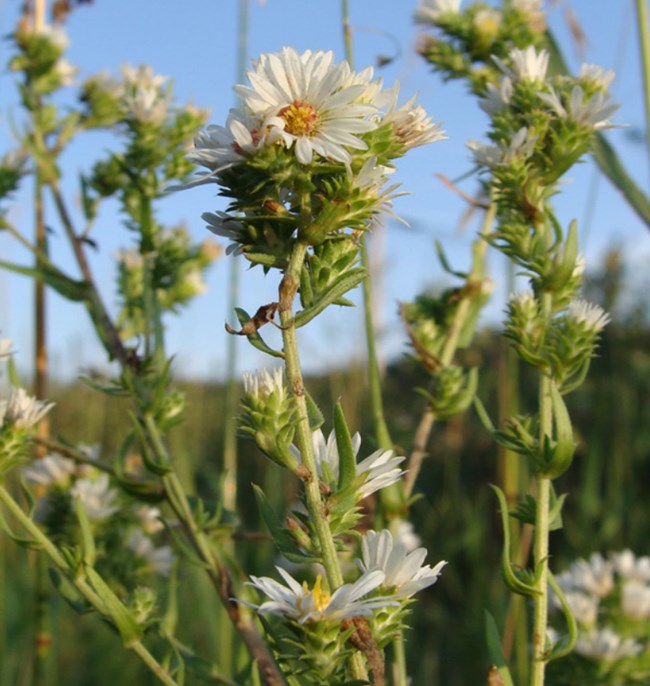
NPS
Overview
Knife River Indian Villages National Historic Site is a 1,758-acre park in North Dakota comprised of mixed-grass prairie and riparian (riverside) forests along the Knife River, an area long used by humans. As a result of the park's agricultural legacy as well as loss of natural disturbance regimes (such as natural wildfires), exotic species are widespread throughout the park. Control of exotic species and restoration of prairie are underway at the park. The Northern Great Plains Inventory and Monitoring Network conducts long-term monitoring of plant communities at the park because it helps us better understand the current health of ecosystems and it can provide an early warning of changes.
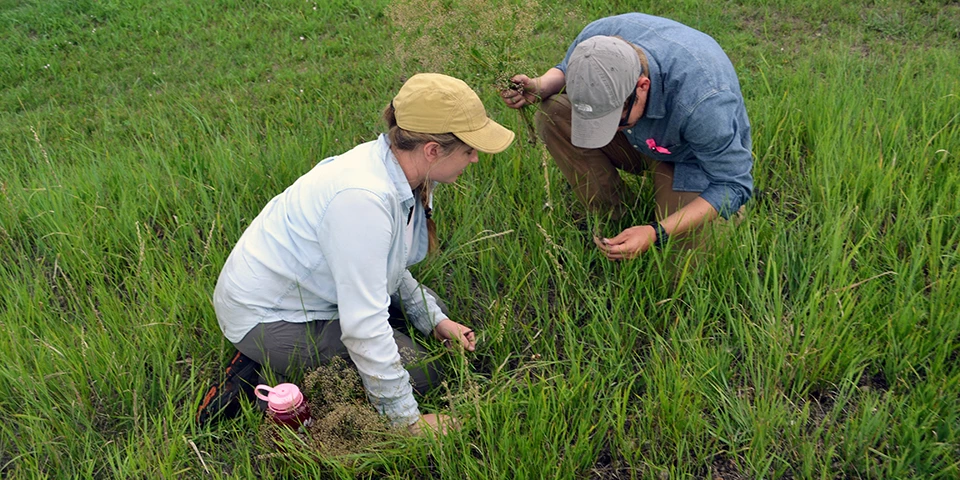
NPS
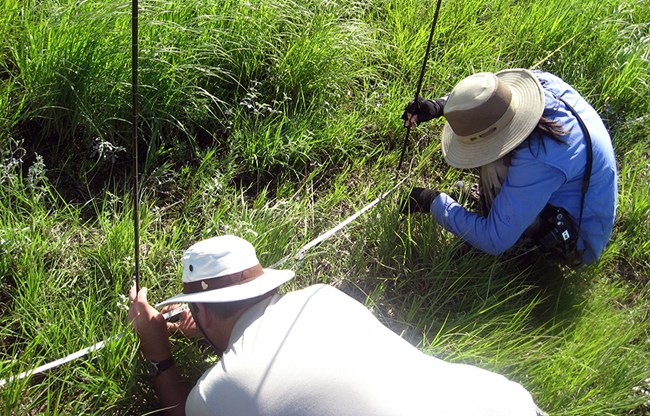
NPS
What We Monitor
We established plant monitoring plots in 2011 throughout the park in areas above the floodplains of the river (uplands). A subset of these plots is monitored each year on a rotating basis. At each plot, we record the native and exotic plant species found and the vegetation cover of each species, a measure of how much ground is covered by the plants. When woody species are present, tree regeneration and tall shrub density data are collected.
In 2014 and 2019, we surveyed plots in the riparian (riverside) forests along the Knife River to better understand the status and trends in river valley forests specifically. We collect information on tree stem density, tree diameter, tree status (live or dead) and condition (leaf-discoloration, insect-damaged, etc.), cover of exotic species, and disturbance. These plots will be surveyed every five years. In 2011, we combined our efforts with the NPS Northern Great Plains Fire Ecology Program to establish a single, coordinated set of vegetation monitoring methods.
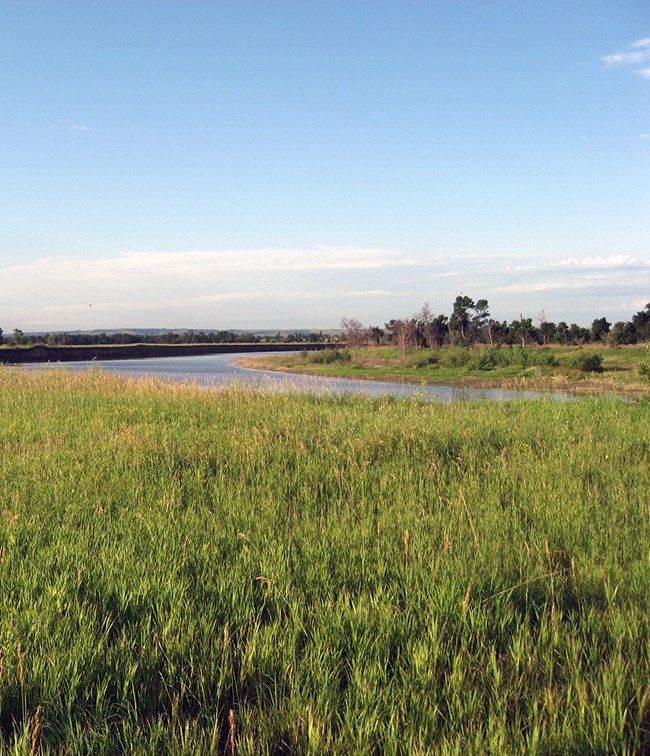
NPS
Plant Communities in the Park
The Knife River Indian Villages National Historic Site species list includes 285 plants. In 2018, 79 unique plant species were found on monitoring plots, six of which were not on the park list. Two of these species have been confirmed and vouchered: Indiangrass (Sorghastrum nutans) and green bristlegrass (Setaria viridis). Over 270 species have been found since 1998. Overall, native plant diversity at the park is low compared to other mixed-grass prairies in the region, but it is variable. Plots in the northern part of the park have native diversity typical of other mixed-grass prairies.
Graminoids (grasses, sedges, and rushes) account for most of the vegetation cover, but forbs (flowering plants that are not woody and not a grass or grass-like), vines, trees, shrubs, and subshrubs (low-growing shrubs) are also present. Only three rare plants have been detected since monitoring began: blue wildrye (Elymus glaucus), maiden blue-eyed-Mary (Collinsia parviflora), and upright carrionflower (Smilax ecirrhata). Exotic species make up a large part of the park’s current vegetation. The average exotic plant cover on plots from 2012 through 2016 was over 55%. Since 1998, we have detected 49 exotic species on the park and four of these are considered noxious by the state of North Dakota. Two exotic grasses are particularly abundant and make up most of the exotic cover on the park: Kentucky bluegrass (Poa pratensis), and smooth brome (Bromus inermis).
Riparian forests along the Knife River are dominated by green ash (Fraxinus pennsylvanica) and boxelder (Acer negundo) with occasional stands of eastern cottonwood (Populus deltoides) in the southern half of the park. Green ash and boxelder saplings and young trees were abundant, but there were no young cottonwood or willow (Salix sp.) trees. This suggests that these forests are following a typical successional trajectory where cottonwood and willow forests are replaced by green ash and box elder forests as they age.
More Details
-
The most common native grasses and sedges were western wheatgrass (Pascopyrum smithii), needle-and-thread (Hesperostipa comate), big bluestem (Andropogon gerardii) and threadleaf sedge (Carex filifolia).
-
There are no significant trends (increases or decreases) in the number of native species since monitoring began. However, plant diversity is threatened by the large abundance of smooth brome and Kentucky bluegrass.
- Smooth brome has not increased over time, but where it is present, few native species grow.
- Kentucky bluegrass has been increasing since the 1990s in the park.
-
In the riparian forests, tree seedlings may struggle to survive because they are covered by thick layers of smooth brome. Exotic forbs are also common in these forests, especially Canada thistle (Cirsium arvense) and dame’s rocket (Hesperis matronalis)
-
Seeding may be a useful tool for reducing exotic species on the park. In 2004 and 2010, an area of the park was reseeded with native grasses and forbs. Exotic species cover declined in these plots and native grass cover increased.
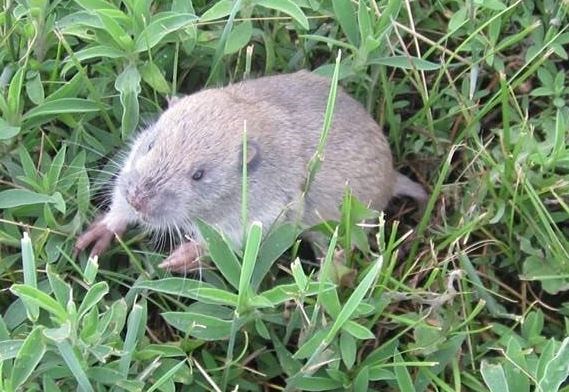
NPS
Did You Know?
Moderate disturbance in the prairie can contribute to a diversity of plant species found there, and some species grow better in slightly disturbed areas as there is less competition from more dominant species. However, high levels of disturbance, especially disturbances caused by humans, often promote invasive or weedy species, allowing them to grow and spread.
At Knife River Indian Villages National Historic Site, a long history of human use has caused fundamental changes in the disturbance regimes, such as fire and grazing by large, native herbivores, that have historically maintained prairies. Exotic species are abundant on the park because of this. Current disturbances are largely due to natural processes, such as small animal burrows, animal trails, and severe drought, but also due to management actions like prescribed fire and restoration efforts.
For More Information
Visit the Northern Great Plains Network website to read more about plant monitoring at Knife River Indian Villages National Historic Site.
Protocol Contact, Northern Great Plains Inventory and Monitoring Network: Isabel Ashton
Summary by Northern Great Plains Network, updated in 2019
Last updated: November 20, 2019
